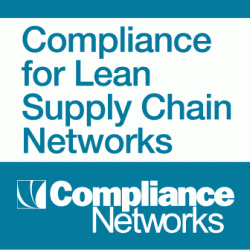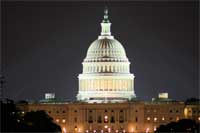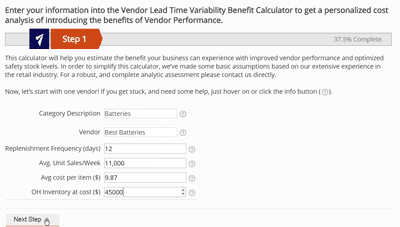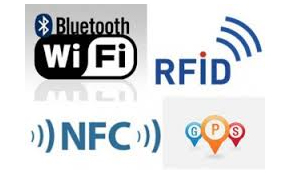 |
November 6, 2014 - Supply Chain Flagship Newsletter |
 |
| FEATURED SPONSOR: COMPLIANCE NETWORKS |
||
 |
||
FREE Calculator: Inbound Shipping Variability Impact on Expensive Safety Stock |
||
 |
|
|||||||||||||||||||||||||||||||||||||||||||||||||||||||||||||||||||||||||||||||||
In general, I don't think the change in Senate control will have any monumental impact on supply chain related issues. The Republican controlled House had been taken no action on several "bad" bills, such as one which would have allowed ports to take local action on trucking issues, which would have led to a patchwork of costly regulations. Now, however, legislation the House has passed or is likely to pass will get a hearing and often approval in the Senate and sent to the President for signature or veto, whereas the House bills basically never had an audience in the other chamber in recent years. Therefore, I would expect the now fully Republican controlled Congress to eventually send the following bills related to the supply chain to Obama: Approval of the "Keystone Pipeline": The state department has been dithering with this for years, and while I think it is more symbolic than truly consequential in the grand scheme of things, I believe such legislation will be sent to the President, likely with strong Democratic support as well. Obama may just sign it. I think it might even be passed with veto-proof margins. Think we will see other "energy independence" legislation. New Highway Funding Bill: Last summer, Congress basically again kicked the can down the road, extending the current program, passed in 2012, through May of next year. I expect a longer term proposal will now be developed, with both Houses under Republican control. How long, and where the funding will come from, are as always the key questions. Some funding could come from tax revenue achieved through repatriation of corporate cash, as noted above, and you should expect some very modest at best increase in gas and diesel taxes (which maybe easier to get through with current low oil prices.)
US "Strategic Direction" on Transportation is Away from Trucking: The special Congressional panel on 21st century freight transportation - chaired by a Republican - pushes the goal of moving more US goods by rail and by a revived barge industry. This is consistent with the DOT's own strategic plan. Both could impact US government policy, though just how is not yet clear. One path would be heavier taxes to account for full "social costs" trucking, but that will not happen with Republican Congress - unless it can be done by executive order. This is likely to be big issue over next 5-10 years. Rules Mandating use of "Electronic Data Loggers" by Truckers Coming in 2015: While most large carriers already have such devices deployed, most small and medium carriers do not. Lack of such electronic tracking allows some drivers to skirt Hours of Service Rules. Some predict when the data loggers prevent that, there will be more customer service issues than shippers currently realize. Be ready.
What is your reaction to our summary of key legislative-regulatory issues? Anything important we've left out? Let us know your thoughts at the Feedback button (email) or section (web form) below.
|
||||||||||||||||||||||||||||||||||||||||||||||||||||||||||||||||||||||||||||||||||
|
||||||||||||||||||||||||||||||||||||||||||||||||||||||||||||||||||||||||||||||||||
|
||||||||||||||||||||||||||||||||||||||||||||||||||||||||||||||||||||||||||||||||||
|
|
|
YOUR FEEDBACK
Catching up with some feedback from a few weeks ago on our First Thought column on "Consumer Goods Companies are from Mars, Retailers are from Venus."
Received a few good emails, including our Feedback of the Week from Andre Martin of JDA Software. You will find them all below.
Feedback on Best Cartoons Column:
I agree with everything you listed but what has been missing until now are two things. 1. The retail supply chain is interdependent whether we like to admit it or not and Jay Forrester from MIT proved it all the way back in 1958 when, working with a bunch of PhD students, he modeled a complete retail supply chain on a Univac computer. The results: a 10% increase in sales at the store level in January cascaded down to the supply chain and amplified to a 40% increase on the factory six months later. This demonstrated the retail supply chain was naturally linked regardless of what we think and regardless if we collaborate or not. Changes in consumer demand at store level will impact the entire retail supply chain and there is nothing we can do about it. Retailers and manufacturers have but two choices to deal with this:
2. Retailers and manufacturers then need to spend a certain amount of time understanding and educating themselves on what are the root causes of changes up and down the retail supply chain. This is not rocket science and can be quickly understood if only people take the time to do this. Then they need a way to create a model of how they wish to do business together. The model should consider the following:
Let me end with this statement: There is no guessing anymore in how to best manage a retail supply chain and flow product from the factory to the store shelf. What is now needed from retail and manufacturing executives is a genuine desire to take some time to learn how this has become a science today. It has taken a long time to get to this point but we have arrived. The enabling technologies are finally available but what is now needed is the will to do it. The financial benefits to retailers and manufacturers are absolutely huge and it is now in their hands to make it happen. Those who do it first will definitely create a competitive advantage for themselves. Andre Martin JDA Software
|
||
30 years ago I worked for a major computer manufacturer. I had started in the stockroom and progressed to a planner position for nuts, bolts, screws, cardboard and skids. This position lead to a more senior planning position where a team would go out to the field each quarter to do a sales force sensing. We had four regional sales units and this process was repeated in each unit.
|
||
I think you have really hit the nail on the head with this one. The fundamental problem is that retailers and manufacturers see the problems and opportunities differently. And that is a very large chasm to overcome. Add to that since the retailer is the customer, and that means in the end they are going to call the shots. Retailers have certainly gotten a lot better in supply chain, and that has made a difference, but even saying that they do not think about it the way a manufacturer does. Great insight - thank you. Adrian Gibson |
SUPPLY CHAIN TRIVIA ANSWER
Q: What does the relatively new technology acronym BYOD stand for?
A: "Bring your own device" - which basically means customers and/or employees can download an app and use what type of mobile hardware they have. Could apply to retail customers for in-store shopping apps (e.g., scan a bar code, get more product info) but we have even heard some DC managers with this vision for how order pickers might operate.
| © SupplyChainDigest™ 2003-2014. All Rights Reserved. SupplyChainDigest PO Box 714 Springboro, Ohio 45066 |
POWERED BY: XDIMENSION
|





 Heavier Truck Proposal Treading Water: The proposal to allow heavier trucks (97,000 pounds) on US highways - with the addition of a sixth axle - was tabled for additional study almost two years ago now, and seems unlikely to see any action until that study is completed by the FMCSA. The last news update from the Coalition for Transportation Productivity, a shipper-backed group that lobbies for the change, was Oct. 1, 2013, which says it all.
Heavier Truck Proposal Treading Water: The proposal to allow heavier trucks (97,000 pounds) on US highways - with the addition of a sixth axle - was tabled for additional study almost two years ago now, and seems unlikely to see any action until that study is completed by the FMCSA. The last news update from the Coalition for Transportation Productivity, a shipper-backed group that lobbies for the change, was Oct. 1, 2013, which says it all. 

